Baking doesn’t have to be complicated or challenging. Here is a simple baking conversion chart to help make sourdough baking more straightforward.
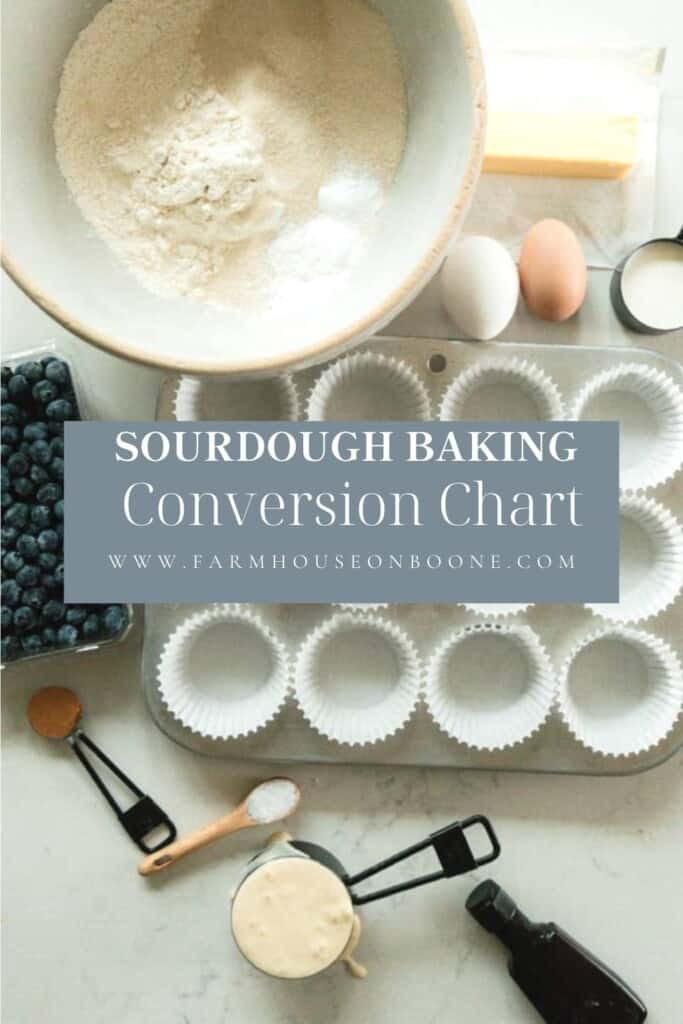
Table of Contents
I have a true love for sourdough, which is not really a surprise at this point. My love and knowledge for this type of baking has grown a lot over the years.
Recipes continue to change, and get better, all in order to get more fermented grains into others homes.
If you are new to sourdough, you can look through over a hundred recipes available on this site, and you can even learn how to transform your favorite recipes into sourdough ones.
While many people use cups to bake with, others use a scale, so I wanted a place to be able to share measurements for both ways to make it more exact and accommodating.
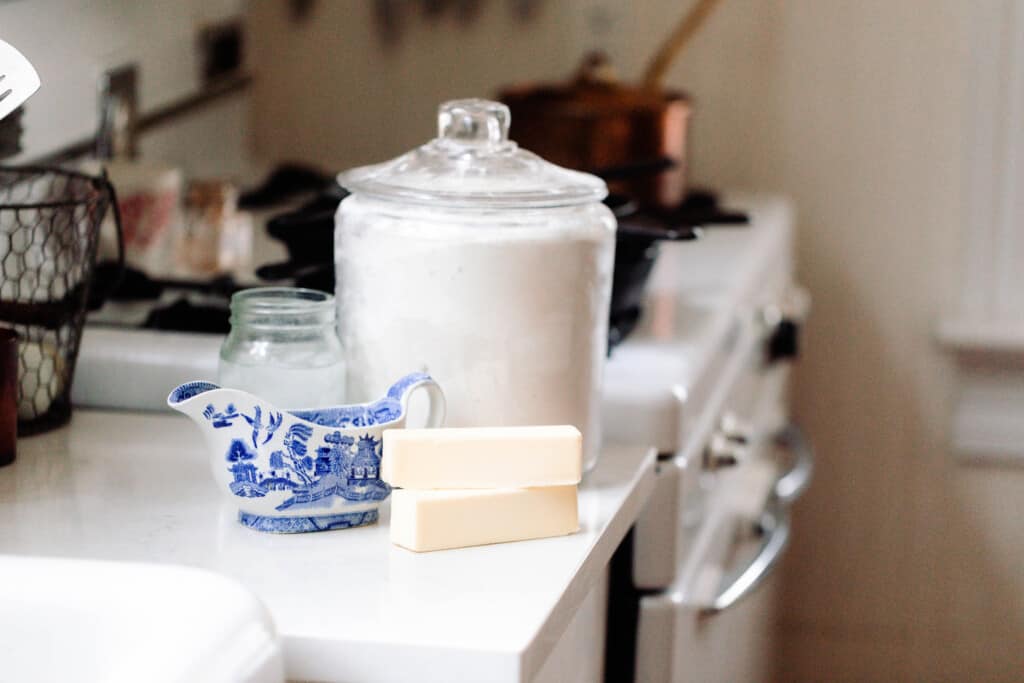
Measuring Flour
- I’m not a technical baker. The “appropriate” way to measure flour is to fluff it up, spoon it into a dry measuring cup and then use a knife of straight edge to level it off. That is just too much fuss for me. I’m more of a dunk my measuring cup into my large canister of flour and shaking it level kind of person.
- If you research flour weights and measurements, you will find slightly differing amounts. These measurements will work for any recipes on this website.
This post contains affiliate links, which means I make a small commission at no extra cost to you. See my full disclosure here.
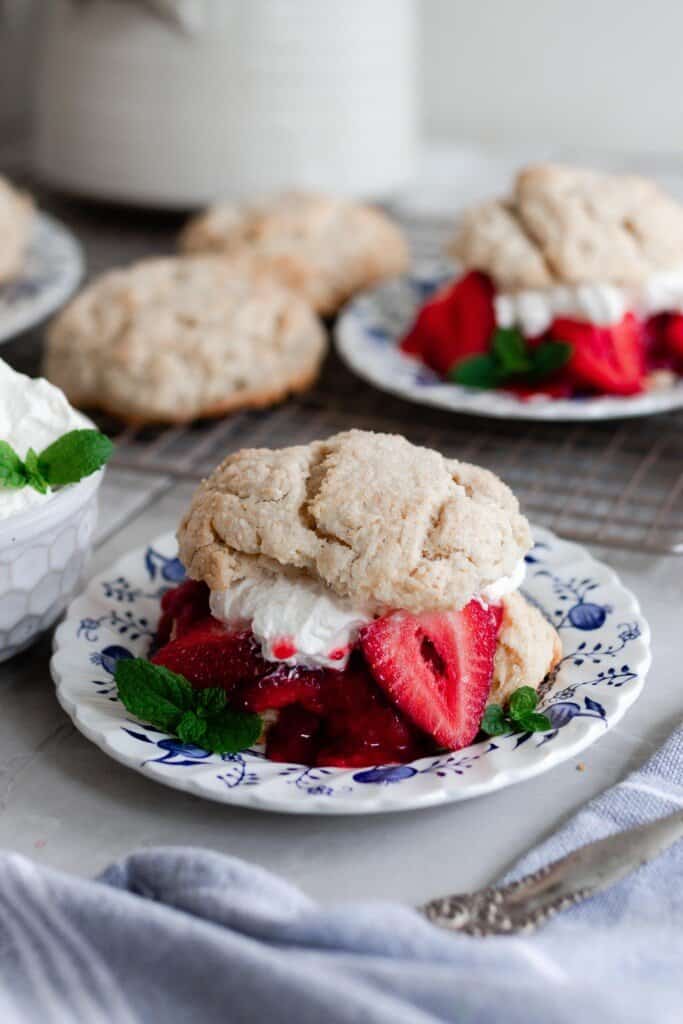
Benefits Of Using A Kitchen Scale:
- Many people love using a kitchen scale for baking because it can make baking much easier.
- More exact way of measuring.
- It becomes much easier when measuring small amounts of ingredients.
- Better and more consistent results.
- Measure everything in one bowl. You don’t need separate measuring cups, spoons, and liquid measuring cups.
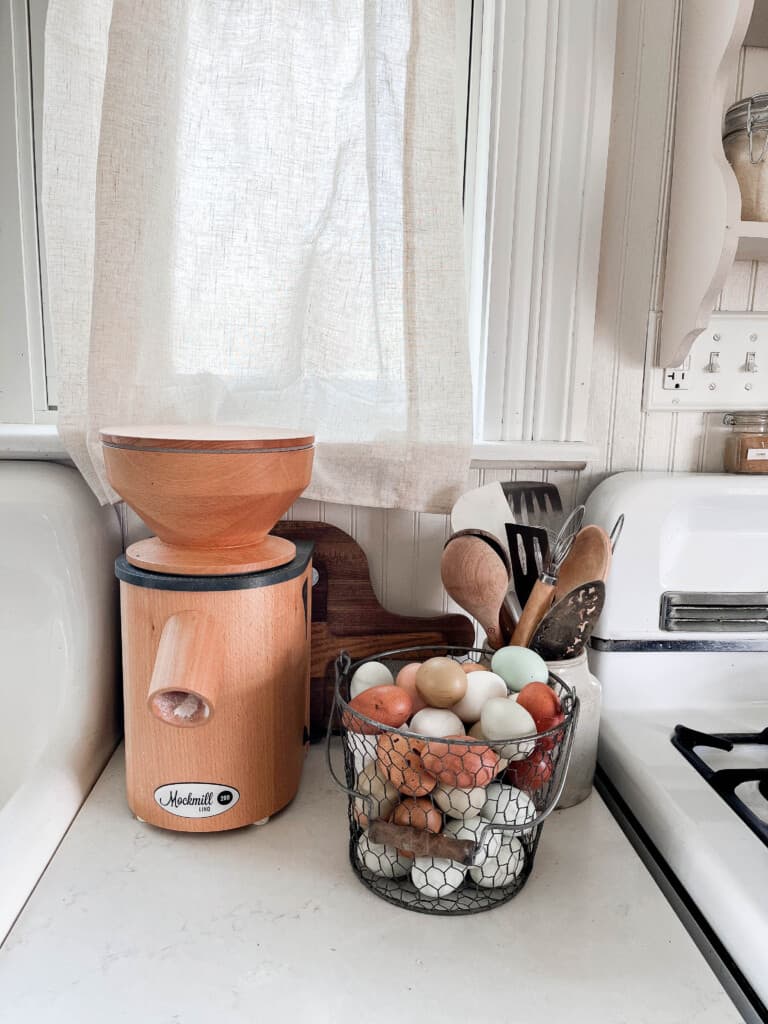
Helpful Baking Tools
Cast iron dutch oven (for artisan loaves and boules)
Baking dishes and cast iron skillets
Sourdough Baking Conversion Chart
Please note that this chart is for converting Farmhouse on Boone recipes, where the recipe is demonstrated in cup measurements. The reason this distinction has to be made is because there are different ways to measure a cup of flour that cause a wide variation in the ending weight.
When using the spoon and level method, one cup of flour ends up weighing 120 grams. Notice the discrepancy in my measurements, where one cup of flour weighs 140 grams. This is because of my no-fuss baking approach, which involves dunking the measuring cup straight into the flour and leveling it off of the top.
I repeated my “super scientific” method of dunking the cup into the flour, leveling it off and pouring it into a bowl, then times. On average I came up with 140 grams.
I had my recipe tester, who lives across the country, repeat this same process in her own home, and she also came up with 140 grams.
So, Though the internet mostly says one cup of all purpose flour weighs 120 grams, my recipes are tested with the one cup = 140 grams measurements. This also applies to bread flour, which generally weighs the same as all purpose flour.
I’m trying to save you some time in the kitchen, and who has time to fill a cup measurer with flour spoon by spoon? I can’t be the only baker who finds this unnecessarily tedious!
I noticed through lots of testing that 100% whole wheat flour actually weighs a bit more than all purpose. Also, milk weighs more than water.
You may notice in the chart, the significant weight difference between active starter and sourdough starter discard. This is because when a starter is bubbly, active and at its peak, it is light and fluffy. When the yeasts are past the active stage, the starter sinks down and becomes a bit more dense.
I know this all drives very precise bakers insane, but I can assure you that I have baked everything from bread to bagels, cookies and muffins, and everything in between at all different stages of starter activity, and it has all turned out just fine.
This is supposed to be fun and nourishing, my friends. Let’s not overcomplicate it too much!
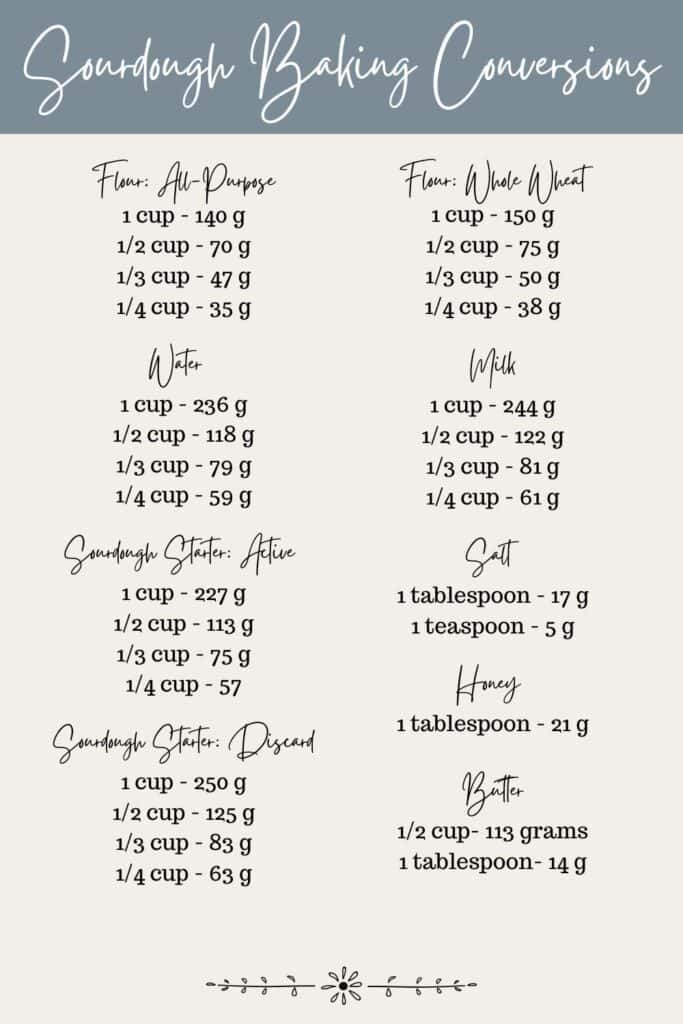
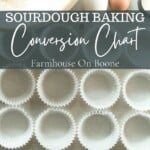
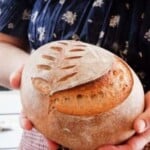
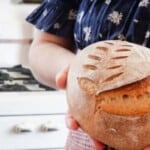
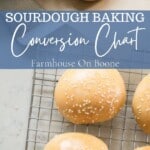

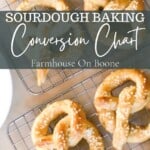










hello i have tryed to make a sourdough starter 2 or 3 times with 1 cup of bread flour king author also with holewheat flour same maker i got a lge ball jar followed your instructions on how to do it but it doesent work the started doesent get bubbly like you say i used wood spoon and covered it with cloth is there any tips you can give me ? please let me know i have dutch oven ready to make bolely bread thank you don
Try using just all purpose flour for 7 days. Make sure to discard each time before feeding again.
God bless you for this chart! I am so tired of finding discard recipes only to be thwarted by the daunting task of measurement conversions.
Thank you! A thousand times, thank you!
Hi Lisa, First I want to thank you so much for your guidance & knowkedge in my sourdough & homesteading journey😊🛐 I am actually awaitting the arrival of your new cookbook in Oct🤗🍞 I was wondering if there is any type of chart in converting grams of wheat berries to cups of ground flour? I’m about to use my grain mill to mill my flour for the first time, but I don’t use a scale – I measure my ingredients (dry & liq) & ex: if recipe says 875gm wheat berries – what would that be in cups? Thank you so much for any help you could give me😊🍁
Small batch sourdough didn’t bulk ferment double after 12 hrs
Was your starter active and mature? Even in a small batch, it should rise!
Dear Lisa: I just made my first whole wheat artisan bread with designs on top- we were all thrilled. But the bottoms burned a little (400 oven) and some of the bread didn’t quite get done- but most of it was delicious. Any tips for the burning on the bottom (from a dutch oven) and some not quite getting cooked? Thanks so much- Sr. Mary Magdalene
I found your question as I was looking for a different answer and wanted to offer what has worked for me. Two things: 1-put a baking pan or stone on the oven under the rack where you bake the bread to absorb the heat. 2-put a large handfull of plain uncooked rice in the bottom of your dutch oven before placing the uncooked loaf in there. it adds just a bit of lift. These 2 things changed the bottom for me!
Thank you for great information
Can I ask why you dont use the standard 250g cup measurement? Im in australia and none of your recipes are working for me because you use odd measurements.
I’m sorry these haven’t worked for you! I have found in my recipes that this conversion works best for me.
I’m an 80 year old who started baking bread just a couple of years ago, and then just yeast breads. I tried sourdough just a couple of months ago but found it to be too finicky and was ready to quit the sourdough. Then I found you, and what a difference. So far I have made the artisan loaf and now just tried the sandwich bread. Turned out PERFECT. I followed your recipe to the letter, except I added 1/2 cup of hemp seeds as well. I’m a widowed on my own, so baking 2 loaves is a bit much, so next I’m going to try halving your recipe and making 1 loaf at a time.
That is so lovely to hear. I’m so glad you gave sourdough another try and have found success with that recipe.
I don;t know if we are allowed private chats on here, but – I have tried, without success to make sourdough bread. I have never made bread before. The gal pal who introduced me to this idea has abandoned me in the middle of my learning curve. As I type this, I have two loaves of sourdough sandwich bread on their first rise. I may be getting up at 5 am to divide the loaves! Is there a way we could communicate on an ongoing basis? I need some coaching please – from you or anyone who is willing to help hold my hand until I get a loaf of bread!! Thank you! susanmpirie@gmail.com
So helpful. So now I’m really interested to learn why the weights are different for active and discarded starter? Thanks for the helpful tips!
Glad I could help. Active is lighter and bubblier, where discard is when it has fallen and become flat.
After watching many of your videos, I quit measuring and just started eyeing it. It’s worked out great so far. I don’t like the hassle of weighing or measuring. I love your cinnamon roll recipe. I will make them up and put 4 to a pan and freeze them. They just as good every time.
That is a great idea! Cinnamon rolls whenever you want them. I need to try that.